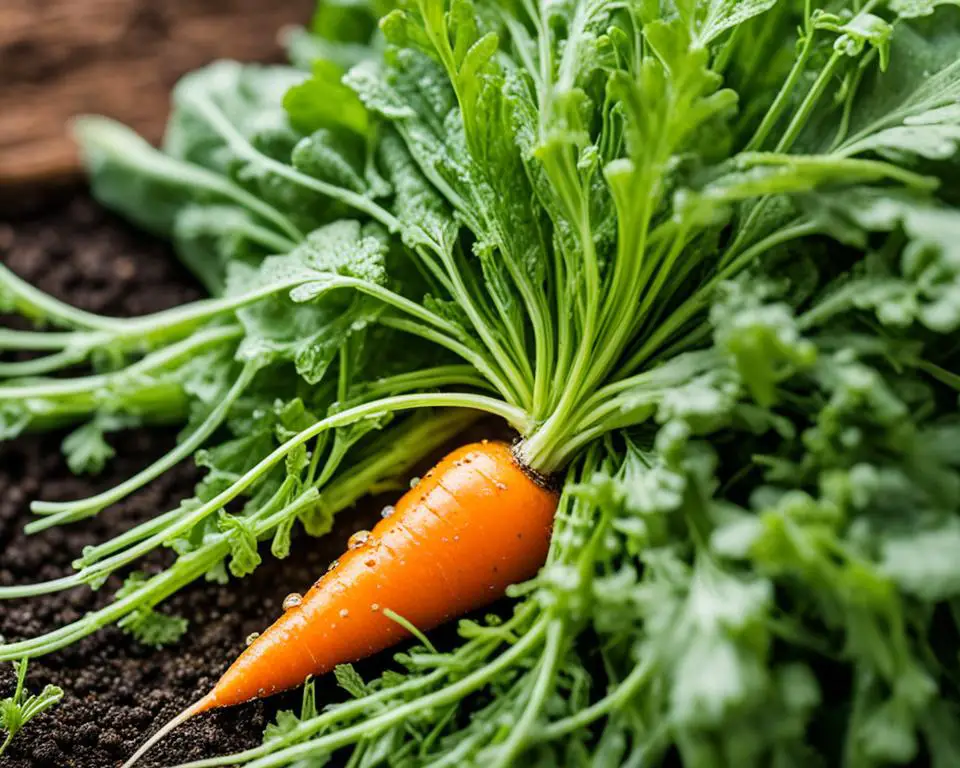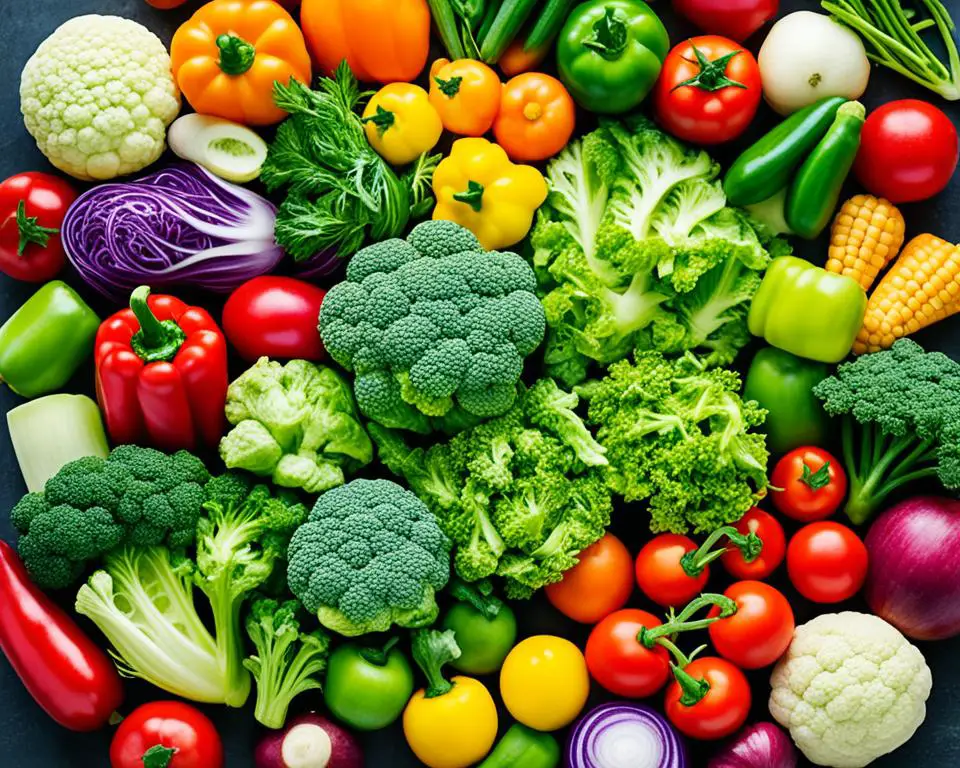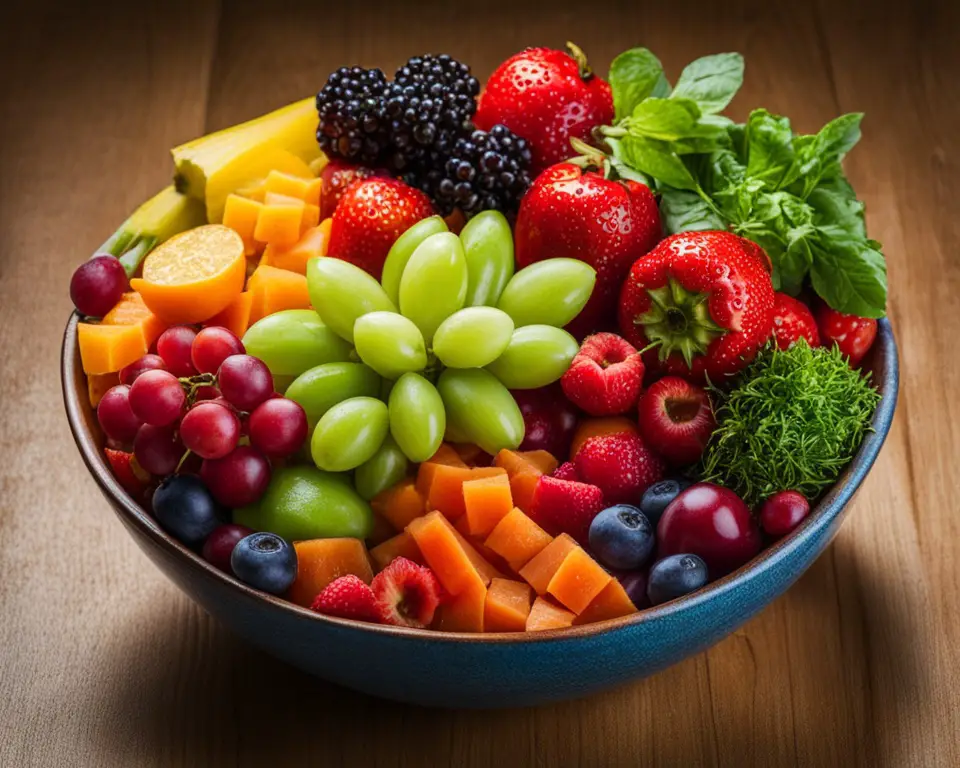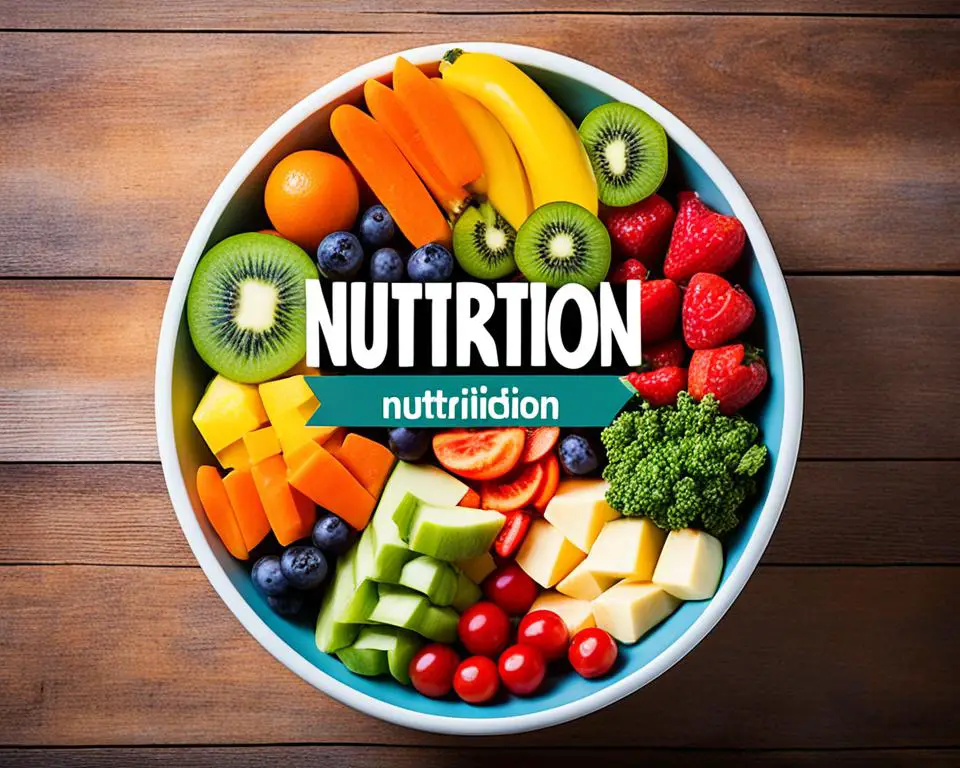Getting kids to love vegetables is more than just good nutrition. It’s about making it fun and educational to introduce vegetables to them. Parents and teachers can use fun veggie learning activities. They help kids form a happy relationship with their food through activities. Kids can learn to enjoy everything from the crunchy bell peppers to the unique artichokes.
Key Takeaways
- Educational vegetable names make learning about healthy eating fun.
- Introducing vegetables to kids early encourages diverse eating habits.
- Interactive methods for teaching veggie names enhance children’s engagement.
- Playful veggie learning can boost kids’ vocabulary and familiarity with healthy foods.
- Using real vegetable names helps children connect with their daily meals.
The Importance of Vegetables in Children’s Diets
Vegetables play a key role in child nutrition, promoting healthy growth. They offer many health benefits. This includes vitamins, minerals, and antioxidants needed for a strong immune system and to avoid health problems.
Vitamins like C and folic acid in vegetables are dietary essentials for kids. They help the body repair and fight illnesses. Adding a variety of vegetables to children’s diets sets them up for lifelong health.
- Broccoli, spinach, and bell peppers are rich in Vitamin C, essential for the immune system.
- Carrots and sweet potatoes are high in Vitamin A, important for visual health.
- Green leafy vegetables provide calcium, necessary for bone development.
Telling kids about vegetable health benefits makes them excited to eat them. When kids understand these benefits, they’re more likely to enjoy eating vegetables. This helps them choose nutritious foods important for their overall diet and health.
Creative Ways to Teach Kids Vegetable Names
Teaching kids about vegetables can be fun. With interactive vegetable learning, education turns into an adventure. Games like vegetable vocabulary and vegetable flashcards make learning enjoyable. They help kids learn vegetable names in an exciting way.
Try using games to make learning more fun. Brightly colored flashcards help kids learn and remember vegetable names. This aids their memory and recognition, making learning fun.
The “What’s In My Plate” game is also fun. It has kids guess the vegetables on a plate. This improves their words and observation skills.
- Creating play dough vegetable shapes
- Setting up a vegetable sensory bin
Interactive vegetable learning grabs kids’ attention. It helps them grow smarter and develop language skills. They also start loving healthy foods early.
| Activity | Skills Enhanced | Tools Required |
|---|---|---|
| Flashcard Matching | Memory, Vocabulary | Vegetable flashcards |
| What’s In My Plate | Observational Skills | Variety of vegetables |
| Play Dough Shapes | Creativity, Motor Skills | Colored play dough |
| Sensory Bin Exploration | Sensory awareness, Cognitive Development | Bins, assorted vegetable shapes and textures |
Using vegetable vocabulary games in playtime teaches kids about veggies. They feel better about eating them. Learning becomes as fun as it is educational.
Educating Children on Common Vegetables They Consume Daily
Teaching kids the names of common vegetable names for kids is key to a healthy food relationship. It helps them know the power of familiar veggies like spinach, carrots, and potatoes. This way, kids play a part in choosing what they eat.
They get to know more and ask questions about their meals. This doesn’t just add to their knowledge. It also makes meal times exciting.

When kids learn about their meal’s veggies, it clears up what’s on their plate. It makes trying new foods less scary for them. Vegetables like onions, peas, and carrots are not just common; they’re full of nutrients kids need to grow.
Kids who understand the health benefits of these veggies might pick healthier options on their own. This lesson is vital for their growth and health.
- Peas: Rich in protein and fiber, peas are a great source of vitamins A, C, and B1 which support vision and immune health.
- Potatoes: Often beloved by kids, potatoes offer vitamin C, potassium, and dietary fiber, helping with digestion and heart health.
- Spinach: Loaded with vitamins A, C, and K, as well as iron and folate, spinach boosts bone health and the immune system.
- Carrots: Well-known for improving eyesight, carrots deliver vitamin A and beta-carotene, also helping skin and immune health.
- Onions: Providing antioxidants and aiding in digestive health, onions are foundational to many dishes, enhancing flavor and nutrient intake.
Linking these familiar veggies to what kids eat daily fosters a positive view toward daily diet vegetables. Knowing what and why they eat sets them up for a healthy future. It’s all about starting healthy habits young for lifelong benefits.
Using a Vegetable Name Chart to Enhance Learning
Introducing a vegetable names chart in early education is both enjoyable and educational. It’s a great visual learning aid for kids. These charts are bright and fun. They help kids know and name different vegetables they see at home or in stores.
The charts catch kids’ eyes and help them remember and name veggies. Kids can see and learn what each vegetable looks like. This is really helpful for those who learn best by seeing.
| Vegetable | Image | Name Pronunciation |
|---|---|---|
| Carrot |  | ‘Kær-ət |
| Broccoli |  | ‘Brok-lē |
| Spinach |  | ‘Spin-ich |
Using a vegetable names chart is a smart way for parents and teachers to start a lively form of learning. It boosts kids’ brains and gives them a good start on learning about food. These charts don’t only teach; they open up a fun way to learn about eating healthy.
- Enhanced memory retention through repetitive visual exposure.
- Fun and interactive way to introduce diet diversity.
- Supports development of pronunciation and language skills.
Vegetable names charts as visual learning aids are truly effective for kids. They help with recognizing, speaking, and understanding vegetables. This makes them a great tool for teaching young ones about healthy eating from an early age.
Exploring the Colorful World of Vegetable Varieties
Entering the world of vegetable varieties unveils a range of colorful veggies. These types of vegetables enchant the eyes and feed the body well. Each color, from tomato reds to spinach greens, isn’t just pretty. They’re packed with nutrients essential for our health and growth.

Getting kids to dive into vegetable diversity can spark their interest and love for food. Talking about different veggies, like leafy greens and root vegetables, shows kids the many choices they have. This turns mealtime into a fun and educational moment.
| Vegetable Category | Examples |
|---|---|
| Root Vegetables | Carrots, Beets, Sweet Potatoes |
| Leafy Greens | Spinach, Kale, Swiss Chard |
| Bulb Vegetables | Garlic, Onions, Fennel |
| Cruciferous Vegetables | Broccoli, Cauliflower, Brussels Sprouts |
Every kind of vegetable variety offers unique tastes, textures, and nutritional benefits. This ensures kids can enjoy a rainbow of colorful veggies. Their diets remain interesting and balanced.
Talking about types of vegetables helps more than just healthy eating habits. It builds a lifelong positive connection with food. It teaches respect and joy for the natural variety available to us.
Explaining Nutritional Benefits to Promote Healthy Eating Habits
Teaching kids about the health benefits of veggies is more than just telling them what to eat. It’s about sparking a lasting love for healthy eating. Knowing what vitamins and minerals are in veggies can make meals exciting and healthy. Vegetable nutrition education is key in teaching kids how these foods help them grow and stay well.
When we talk about the powers of veggies—like how carrots help you see in the dark or spinach makes you stronger—kids want to eat them more. This method teaches and encourages kids to choose healthy foods. They learn to make good food choices on their own.
- Fiber in broccoli aids digestion
- Antioxidants in tomatoes fight cellular damage
- Iron in spinach enhances blood health
Every vegetable has unique benefits, adding value to meals beyond just taste. Knowing these benefits lets kids see the importance of their food choices. This knowledge supports vegetable nutrition education, leading kids to make smart diet choices. It teaches them to care for their health.
Fun Activities to Help Kid’s Recognize Vegetable Names
Playing vegetable naming games and interactive nutrition activities makes learning fun. Kids gain important dietary information while enjoying themselves. Veggie learning fun can become a part of daily play. This transforms routine tasks into exciting educational adventures.
Vegetable stamping is a hit activity. Kids use cut veggies like okra and potatoes dipped in paint for art. It introduces them to vegetable shapes and names, boosting their creativity.
- Learn vegetable names through artistic expression.
- Develop fine motor skills with hands-on activities.
- Enhance recognition through sensory play.
The “Pick Up The Vegetable” game is another great idea. Kids grab vegetables from a basket as their names are called. It boosts their recognition and quick thinking.
| Activity | Description | Skills Developed |
|---|---|---|
| Vegetable Stamping | Using vegetable cut-outs as stamps in paint. | Creative Arts, Name Recognition |
| Pick Up The Vegetable Game | Selecting vegetables from a basket on name call. | Listening, Quick Response |
These creative approaches to veggie learning fun aim to make nutrition exciting for children. They help kids love and recognize vegetables as part of daily life.
Introducing Children to Cultural Vegetable Dishes
Trying cultural dishes with vegetables lets kids experience the global veggie cuisine firsthand. They can taste vibrant veggie curries from India or the detailed vegetable sushi rolls from Japan. These experiences show how different cultures celebrate vegetables in their meals. Introducing these dishes helps kids like more foods. It also teaches them about diverse vegetable recipes worldwide.
Adding global veggie cuisine to a kid’s meals introduces them to world cultures. It can spark an interest in cooking and a love for eating healthy. From a simple stir-fry to a complex ratatouille, each recipe has a story. It tells us about its origins and the people who enjoy it.
- Italian Ratatouille – a mix of vegetables cooked in tomato sauce.
- Chinese Vegetable Stir-Fry – crunchy veggies in a tasty sauce.
- Mexican Salsa Verde – a green sauce with tomatillos, onions, and cilantro.
These diverse vegetable recipes show kids the world’s flavors and the health benefits of different veggies. Every vegetable offers vitamins, minerals, and antioxidants for a healthy diet. Encouraging children to try these cultural dishes with vegetables can make them more open to new, healthy foods.
Preparing Kid-Friendly Vegetable Recipes for Better Engagement
Making vegetables fun for kids is all about creativity. Preparing kid-friendly vegetable recipes makes meal times more enjoyable. It’s key to involve them in cooking. This teaches them about what they eat in a fun way.
To get kids excited about healthy veggie dishes for children, make food look fun. Use colorful veggies and playful shapes. Something as simple as smiling faces or heart-shaped cucumbers can make kids want to eat their veggies.
- Involve your child in picking the vegetables at the grocery store or market. This makes them feel involved and excited about the meal planning.
- Let kids wash, sort, or even cut the vegetables (with supervision) depending on their age. Handling the ingredients teaches them about the textures and natural diversity of vegetables.
- Decorate dishes together, using vegetables to make edible designs on plates, empowering kids to be creative while learning about healthy eating.
By doing these things, you’re not just engaging kids in cooking. You’re also helping them develop healthy eating habits for life. Every dish made is a chance to learn and have fun together. This helps kids love veggies and know why they’re good for them.
Conclusion
We’ve come to the end of our vegetable journey and learned the power of early healthy habits. It’s been shown that sparking a child’s interest in veggies is key to their lifelong health. By using fun teaching methods and lots of examples, we help kids love good food as they grow.
This adventure has shown us how crucial vegetable education is for a child’s health. Introducing veggies in a fun and interesting way leads to smarter, healthier eating choices. These efforts help kids learn about nutrition and how to choose what they eat wisely.
Our mission was to give parents and teachers the tools to make veggies exciting. By turning veggie learning into a fun adventure, kids will choose them more often. In the end, we’re not just teaching kids for today but helping them grow into healthy adults for the future.



